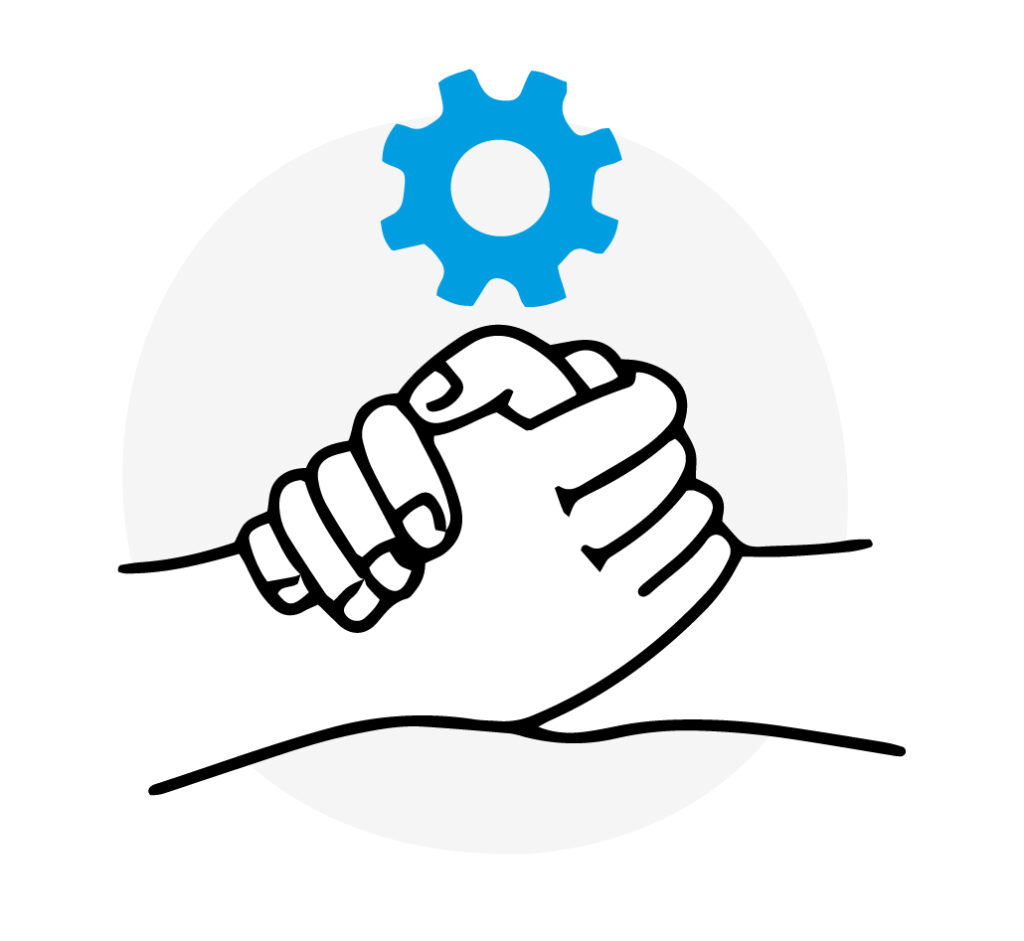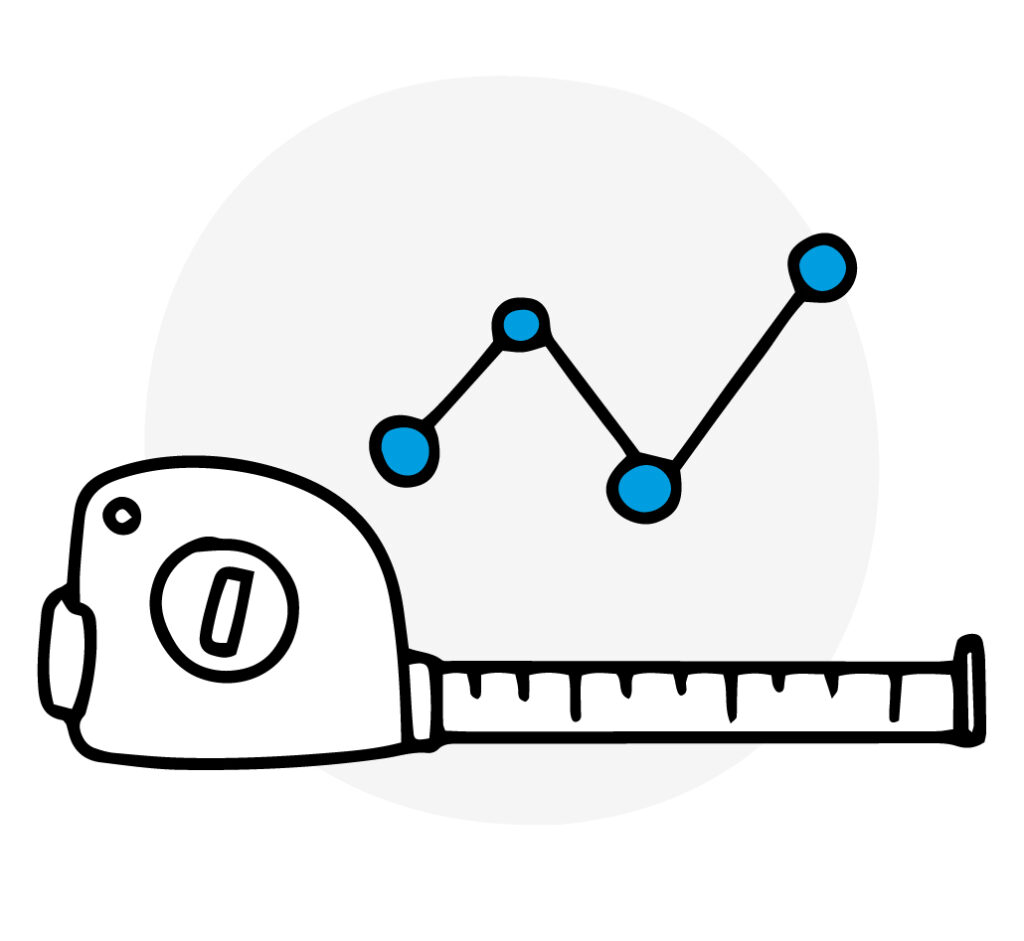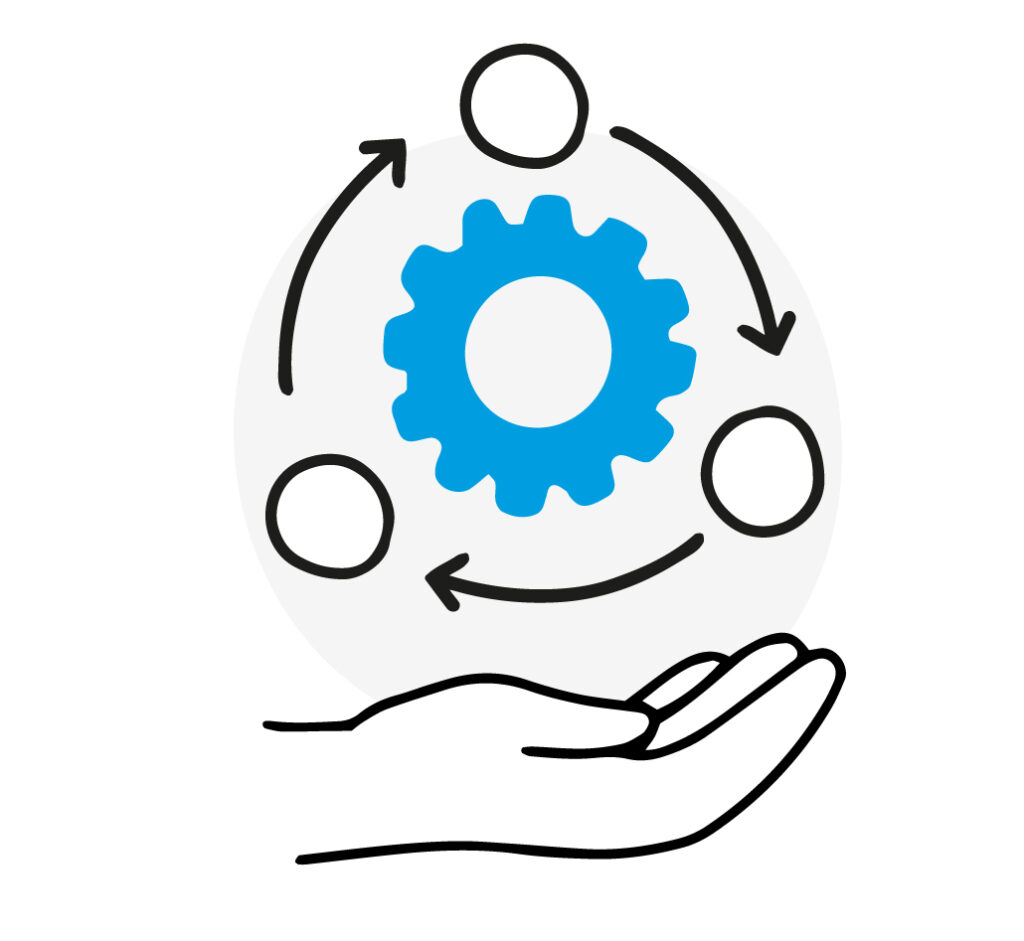Scrum Master Functions: A complete guide for agile leaders-EN
jordibc
- Business Agility
- Article
In previous articles we have covered both the Scrum Master profile from a more generic point of view and the Product Owner profile, as well as the Sprint, Planning, Daily, Review, Retrospective.
The Scrum Master is a key figure in the development process of agile projects. This role has several important functions ranging from facilitating the work of the team, removing obstacles, managing the development process, to the continuous improvement of the team and the motivation of its members.
In this article, we will talk in detail about the functions of a Scrum Master and their impact on the success of the team and the project in general.
We will also see some situations in which a Scrum Master can be involved as an example, through the figure of Helena.

Scrum Master Roles
Facilitator and Team Leader
The Scrum Master’s role as Facilitator and Team Leader is critical to ensure the success of the project. He or she must be a helpful leader, who is willing to assist his or her team in any task needed to complete the work and meet the Sprint objective.
To fulfill this role, the Scrum Master must be able to identify the team’s needs, listen to their concerns, and facilitate solutions to any problems that arise. He or she must ensure that the team has everything they need to complete the work, from information, tools and resources to training and support.
In addition, the Scrum Master must be an expert facilitator in conducting Agile meetings and events, such as Sprint planning, Sprint review, refinement sessions, and Sprint retrospective. During these meetings, the Scrum Master must ensure that all team members actively participate, that relevant issues are addressed, and that decisions are made together.
It is also important for the Scrum Master to foster collaboration and communication among team members, encouraging developers, the Product Owner and any other stakeholders to work together to achieve project success.
Helena, the Scrum Master, has noticed that during Sprint planning meetings, some team members are not actively participating and seem to be disengaged. Instead of simply ignoring this situation, Helena decides to address the problem.
She sets up a one-on-one meeting with each team member to better understand their concerns and motivations. She discovers that some members feel overwhelmed by the amount of work assigned, while others have difficulty prioritizing tasks. Helena listens carefully to their concerns and, in collaboration with the team, proposes to redistribute tasks more equitably and establish a mutual support system. She also organizes an internal training session on time management techniques to help the team better manage their workload.
As a result, team members feel more empowered and engaged, which is reflected in higher productivity and quality of work during the Sprint.
Protecting the Team
In many organizations, more than would be desirable, developers are affected by constant interruptions from unplanned meetings, changes in requirements or lack of resources. The Scrum Master can help prevent these interruptions by acting as a barrier between the team and outside forces. He or she can ensure that the team has an adequate workspace, with the necessary tools to do its work effectively. He or she can also ensure that the team has enough time to work on their tasks without being interrupted and can establish clear policies to minimize distractions as well as communicate to the rest of the organization the importance of respecting those policies.
In addition, the Scrum Master can protect the team by ensuring that agile processes and practices are followed properly. This involves making sure that established guidelines for communication, collaboration, and task management are followed. It can also help ensure that roles and responsibilities are clear to all team members.
Another way the Scrum Master can protect the team is by fostering a safe and collaborative work environment. This involves promoting trust and open communication among team members, as well as encouraging inclusion and diversity on the team. He or she can also help mediate any conflicts that may arise between team members, acting as a neutral facilitator and seeking win-win solutions.
Helena is committed to create a safe and collaborative work environment for developers. As a Scrum Master, she fosters trust and open communication among team members, creating a space where everyone feels safe to express ideas and concerns.
In addition, Helena promotes inclusion and diversity in the team, recognizing the value of diverse perspectives and the creativity they can bring. In the event of conflict, she acts as a neutral facilitator, mediating and seeking solutions that benefit all team members, thus fostering a harmonious and productive work environment.
Process Leader
The Scrum Master also acts as a process leader, ensuring that the team is correctly following the Scrum framework and that the principles and values that govern it are being adhered to. To do this, he/she must be familiar with the Scrum principles and be able to guide the team in their application.
Despite his leadership role, it is important to note that the Scrum Master does not become a traditional boss or manager. The Scrum Master has no hierarchical authority over the team and does not make decisions for them. Instead, his or her leadership is based on facilitating and serving the team, guiding them in the implementation of Scrum and promoting a collaborative environment.
In addition, the process leader has the responsibility to oversee and improve the Scrum process. This involves fostering an environment in which the team can identify and remove obstacles that may arise during project development, as well as fostering continuous improvement of the team and the process itself. The Scrum Master should always be on the lookout for opportunities for improvement and encourage the team to experiment and look for new ways to work more efficiently and effectively.
The process leader must also ensure that Scrum responsibilities are clearly defined and understood by all team members. This involves clear and effective communication, as well as ensuring that Scrum processes and practices are followed properly.
During a Sprint planning meeting, Helena, the Scrum Master, stepped in as process leader and facilitator to guide the team in the proper application of estimation and task decomposition techniques, reminding them of Scrum principles. In addition, Helena ensured that the team had an adequate workspace and provided the necessary tools to work efficiently.
During the Sprint retrospective, she encouraged the team to identify opportunities for improvement and experiment with new ways of working, which led to the implementation of an improved user story review and prioritization technique. Helena also organized a special meeting to discuss roles and expectations, ensuring clear and effective communication between team members, thus ensuring a common understanding of Scrum roles and responsibilities.
Mentor & Trainer
The role of mentor and trainer is one of the most important functions of the Scrum Master. This role not only involves helping the team to grow and develop professionally, but also supporting individual team members in their personal progress.
To be a good mentor and trainer, the Scrum Master must have, as we have seen above, a thorough knowledge of the Scrum methodology and how it is applied in the organization in which he or she works. He must also have effective communication skills, to be able to transmit his knowledge and guide the team in a clear and concise way.
In addition, you must be able to identify the individual strengths and weaknesses of each team member and use this information to help each member improve in their work. He can do this through training and skills development, and through constructive feedback.
The Scrum Master can also play an important role in managing team performance. This involves setting clear and achievable goals for the team, monitoring their progress toward those goals, and providing support in identifying and resolving challenges that may affect their performance, as we will explore in the next section.
Helena identifies that one of the developers is having difficulty meeting deadlines. Helena approaches the team member and offers her help as a mentor.
She begins by understanding the underlying causes of the situation and then provides additional guidance and resources to improve time management and planning. Helena also engages in regular follow-ups with the developer to provide constructive feedback and ongoing support in their professional development.

Measuring and Analyzing Team Productivity
The Scrum Master must not only ensure that his or her development team is producing a high-quality product but must also ensure that the team is working efficiently and effectively. In this regard, measuring and analyzing team productivity is one of the key functions of the Scrum Master.
To measure team productivity, the Scrum Master must establish clear metrics with the rest of the team that reflect the team’s progress toward its goals. These metrics may vary depending on the project and the needs of the team, but some common metrics include delivery time, defect rate, and customer satisfaction.
Once the metrics have been established, the Scrum Master must ensure that the team is tracking them and collecting the necessary data. He or she must also analyze the data to identify potential problems or areas for improvement. If problems are identified, he or she should work with the team to develop solutions and improvements.
Finally, the Scrum Master can employ tools and techniques to facilitate transparency and continuous learning within the team. For example, promoting the use of visual dashboards and workflow charts can help visualize progress and potential bottlenecks without focusing on individual productivity. In addition, encouraging collaboration and knowledge sharing among team members can generate an environment of trust and mutual learning.
Helena, as Scrum Master, noticed that the team was experiencing delays in delivering user stories. To address this problem, she established delivery time metrics and used a visual dashboard to monitor progress.
After analyzing the data collected, he identified lack of clarity in requirements and inefficient communication with the Product Owner as major obstacles. In response, he facilitated refinement sessions and promoted more open communication, resulting in a significant improvement in team efficiency and meeting the story delivery target in the next sprint.
Conflict Management and Team Motivation
Conflict management and team motivation are two crucial aspects in the success of any agile project. As a Scrum Master, it is important to have the necessary skills to manage conflict situations effectively and keep the team motivated and committed to the project goals.
First, it is important to understand that conflicts are natural and can arise in any team. The Scrum Master must be prepared to deal with them in an effective and timely manner. To do this, it is important to establish an environment of trust and mutual respect in the team from the beginning, so that members feel comfortable sharing their concerns and views. It is also important to address problems as soon as they arise before they become a major problem that affects the team’s productivity.
Another way the Scrum Master can help manage conflict is by acting as a mediator between team members. This may involve listening to both sides of the conflict, providing unbiased feedback, and helping to find a solution that meets the needs of all parties involved.
In terms of motivating the team, the Scrum Master can help by providing a positive work environment and supporting, as we have seen above, the professional development of each member. It is important to recognize and celebrate the team’s accomplishments, as well as provide opportunities for learning and personal growth. The Scrum Master can also foster a culture of teamwork and collaborate with the team to set clear and achievable goals to keep members motivated and focused on the success of the project.
During one project, Helena noticed that a conflict had arisen between two team members due to differences of opinion on how to approach a critical task. To handle this situation, Helena organized a meeting in which she allowed both to express their concerns and points of view in a respectful manner. Acting as a neutral mediator, she facilitated effective communication between the members, seeking common ground and encouraging the search for mutually beneficial solutions. In the end, they were able to reach an agreement and harmony and collaboration was restored in the team.
BONUS: Scrum Master & Afterworks
As we have just seen, the Scrum Master plays a key role in creating a healthy and productive teamwork environment. One way to achieve this is through afterwork sessions or extracurricular activities that allow the team to get to know each other better and strengthen bonds of trust and collaboration.
To organize these activities, the Scrum Master can take advantage of key moments such as the end of a sprint or the delivery of an important project milestone. Some ideas for these sessions may include dinners, movie outings, sports activities, group board games, outdoor activities, or facing a scape room together.
It is important that the Scrum Master takes into account the preferences and needs of the team when choosing the activity, as well as making sure that the activity is inclusive and respectful of everyone on the team.
The Scrum Master, Helena, decided to organize an afterwork session to foster cohesion and teamwork in her development team. After the successful delivery of a sprint, she decided to plan a dinner at a local restaurant.
Before doing so, she conducted a survey to find out the food preferences and dietary restrictions of each team member, making sure everyone felt included. During the dinner, Helena took the opportunity to promote interaction and fun, encouraging team members to share personal anecdotes and experiences.

Conclusion:
In conclusion, the Scrum Master’s responsibility is crucial to the success of an agile development team. Their roles range from facilitating and serving the team, protecting them and leading the development process, to mentoring and coaching, fostering a culture of continuous improvement, and managing conflict and team motivation.
A good Scrum Master must have leadership, effective communication, problem solving and decision-making skills, as well as a deep knowledge of the Scrum methodology and its application in product development projects.
It is important to note that, although the Scrum Master is a key role in the agile development process, he or she is not solely responsible for the success of the team. All team members must work together and be committed to following agile practices to achieve project goals.
In short, the Scrum Master is a facilitator, leader and mentor, whose role is to guide and support the team on its journey to deliver a high-quality product on schedule. With his leadership and experience, he can help his team overcome obstacles and grow both professionally and personally.




